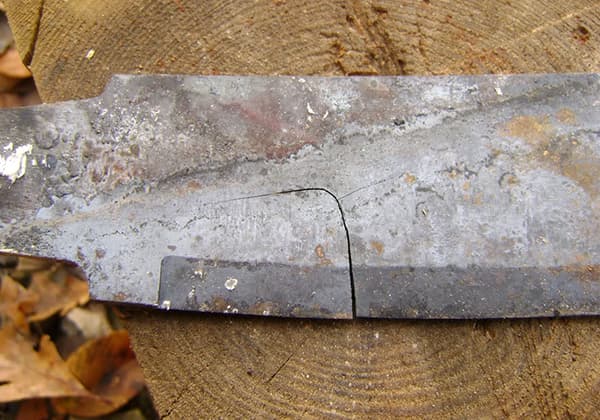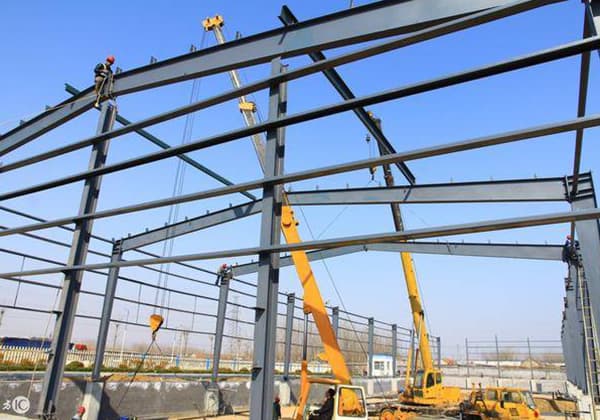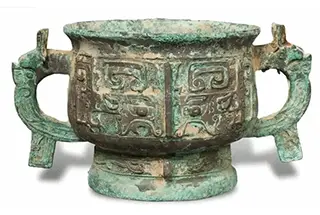During the heat treatment process, a fracture failure occurred, and upon inspection, it was discovered that the cause was the presence of mixed crystals. Mixed crystals are a common finding during metallographic examination following the heat treatment process in the mechanical manufacturing industry. Today, let’s discuss mixed crystals.
1. What is mixed crystal
Mixed crystals, as the name suggests, are a mixture of various grain sizes. Grain size is a measure of the toughness of metal materials, with larger grain size resulting in higher material toughness, and smaller grain size leading to lower toughness.
If low-grade grains are mixed in with high-grade grains, the overall performance of the metal material will be diminished. The greater the proportion of low-grade grains, the more unstable the overall performance of the material will be.
Usually, mixed grains are considered to exist when the structure contains grains with different sizes that differ by 3-4 grades. If the proportion of large grains exceeds 10%, it is necessary to be cautious about the early failure of mechanical parts that may be caused by the large grains.
The unpredictable nature of mixed crystals makes them a concern for heat treatment workers as it is impossible to predict when mechanical parts may fail. The image below shows the metallographic picture of mixed crystals.

2. Causes of mixed crystal
There are two basic reasons for mixed crystals:
A. Alloying element segregation (uneven distribution of alloying elements)
B. Critical deformation (steel deformed, grain changed)
Focusing on these two reasons, it starts from steel smelting.
1. Steel smelting:
It is well known that the process of steel smelting involves using iron ore and various raw materials to eventually produce molten steel through a complex series of steps, which is then cast into ingots. Steel plants are the most professional in the formation process of molten steel, and since the liquid phase molten steel is naturally uniform, no evaluation will be performed here. Instead, we will focus on the process of solidifying liquid steel into ingots.

Ingot segregation is the most prevalent form of segregation.
In simple terms, the cause of segregation in the ingot is straightforward – the alloy elements tend to solidify first during the solidification process, whereas the areas with fewer alloy elements solidify later, causing an uneven distribution of alloy elements.
The most typical metallurgical structure produced by this process is dendrite segregation.
There are also impurities present, such as slag inclusions that collect at a specific location during the rolling and cooling process of molten steel.
The primary issue with segregation is that it results in an uneven distribution of alloy elements, including carbon, chromium, nickel, molybdenum, aluminum, and others.
This uneven distribution forms separate regions with distinct chemical compositions, each of which can be considered a separate type of steel.
At this stage, these regions can be identified as separate grains, distinct from mixed grains. Is that clearer now?

2. Steel rolling:
Rolling is a process that transforms an ingot into its final form such as a bar, plate, wire rod, or section steel.
The steel ingot is first reheated and then subjected to multiple passes of rolling until it meets the desired specifications.
Before rolling, the steel is typically subjected to diffusion annealing.
The purpose of diffusion annealing is to homogenize the alloy elements in the steel. As previously discussed, segregation of alloy elements during solidification results in an uneven composition, leading to potential problems.
To address this issue, the steel undergoes diffusion annealing at a temperature of approximately 1200°C.
At this temperature, the activity of the alloy elements increases and diffusion occurs within the steel, moving from areas of high concentration to areas of low concentration, thereby improving the uniformity of the steel.
At the same time, the steel remains in a solid state and has not yet entered a liquid phase.
Even though the alloy elements have moved, they only improve the uniformity of the steel and cannot completely eliminate segregation.
Rolling is similar to forging and extrusion processes.
During this process, the steel undergoes heating, forging, extrusion, cooling, recrystallization, annealing, re-extrusion, and other procedures.
Some defects of the original steel are gradually reduced during this process, and the degree of segregation of alloy elements also decreases.
In an ideal scenario, these processes eliminate defects and reduce segregation, but in reality, steel plants prioritize cost savings and efficiency.
To achieve this, they may lower the diffusion annealing temperature and time, skip the annealing process, or increase the forging ratio during the rolling process, which can cover up but not eradicate defects and lead to an even greater degree of segregation during the rolling process.
This change is described in detail in the next section.
3. Deformation problems (forging, extrusion):
After receiving the steel, the mechanical processing plant typically uses hot forging and cold extrusion methods to form the workpiece and then completes the machining, heat treatment, and grinding to produce the final product.
However, problems can arise during this process.
Hot forging is similar to steel rolling as mentioned in section 2, but with different equipment, compression ratios, and product structures.
Cold extrusion, on the other hand, uses the toughness of the steel to produce plastic deformation without heating.
Both of these processes involve issues with plastic deformation.
The toughness of a metal refers to its ability to undergo deformation, which is typically thought of as its ability to stretch or compress.
The better the toughness, the greater the ability to stretch and the lesser the ability to compress.
What happens to the grains during tension or compression? Consider a rubber band.
Initially, if the diameter of a rubber band is 10mm and it is stretched to 10 times its length, what happens to its diameter?
It certainly doesn’t become 1mm, but to illustrate the problem, everyone knows that it becomes thinner. If you continue to stretch it, it will become even thinner until it breaks.
The deformation of metal is a process of grain change.
Before deformation, the grains have an irregular shape, but are essentially in the form of a ball.
With the application of external force, the grains are stretched like a rubber band and their space is compressed. They become thinner and thinner as the external force continues.
Previously, they were a pile of potatoes, but now they have become a bundle of wheat stalks.
During this process, the grains appear to be unchanged, but upon closer inspection, their size has become much smaller.
It’s important to keep in mind that appearances can be deceiving, and not to be misled by what is seen on the surface.
4. Heat treatment:
Heat treatment is an intermediate process that cannot be seen or touched and cannot be detected immediately or adjusted during the process.
The status of the product can only be determined through process control and final inspection.
However, the problems that have arisen from all previous processes become apparent during heat treatment.
The heat treatment process requires carburizing and quenching to be heated above the austenitizing temperature of the steel.
Therefore, the workpiece must be heated to a temperature above AC3 for the operation to take place. During this process, several important changes occur.
The body-centered cubic ferrite lattice transforms into the face-centered cubic austenite lattice, and the amount of dissolved carbon, incorporated alloy elements, and the diffusion of alloy elements all occur during this process.
The boundaries between grains are also broken and recrystallized, causing the original grains to change and be reorganized.
The process of grain recombination is essentially a competition of energy, similar to the current international situation where a country’s size is determined by its high-tech, nuclear weapons, and combat capabilities.
The stronger a country is, the larger it becomes, whereas a weaker country is more prone to fragmentation.
Similarly, carbides formed by alloy elements act as strongholds in the grains, hindering their growth.
In areas where alloy elements are scarce, they are unstoppable and their territory expands, causing the grains to grow.
To ensure the desired deformation size of the product, the heating temperature must be kept at a moderate level to restrict the diffusion behavior of the alloy elements.
If the heating temperature is too high, it may result in a failure of phase transformation, and if the temperature is too low to reach the required austenitization, it will also lead to a failure of phase transformation.
Therefore, the heating problem in heat treatment requires medium temperature heating, which is highly restricted.
Typically, the carburizing temperature is around 900-940°C and the quenching temperature is 30-50°C above the AC3 temperature.
These are textbook values, and now let’s consider the potential consequences of the previous sections at these temperatures.
a. Effect of alloy element segregation:
As the austenitizing process progresses, different areas have varying alloy element contents, leading to different austenitizing temperatures in these areas.
Even if the workpiece reaches the same temperature, some areas have already begun the austenite transformation while others are still in the preparation stage.
Some areas have completed the transformation of austenite, while others have not yet, resulting in continuous growth of grains in the areas that have already transformed into austenite and fine grains in areas that have not yet completed the transformation.
If the austenitizing is stopped at this point and cooled rapidly, a coexistence of large and small grains will occur, and in severe cases, mixed grains may form.
Most alloy elements, such as V, Ti, Nb, etc., hinder grain growth.
Alloying elements such as Cr, Mo, W, etc. will slow down the formation of austenite.
These elements can affect the grain size and play a role in refining the grains.
On the other hand, there are a few elements, such as Mn and P, that can promote grain growth.
If these elements seriously segregate in steel, mixed crystal may occur.
b. Influence of deformation during rolling, forging and cold working:
During the process of pulling and extrusion, the grains are deformed, which reduces the energy at the original grain boundaries.
As the heating temperature increases, the grains will recombine when the recrystallization temperature of the steel is reached.
At this time, the energy of the alloy element becomes greater, and two adjacent thin grains can easily merge.
Elements that were previously restricted to moving within a single grain can now break through the two grain boundaries and take a shortcut to merge the two thin grains into a large grain in a very short time.
As the heating temperature and time continue to change, these grains continue to grow until there is no energy to break through the grain boundary constraints.
At this point, many large grains have formed.
However, not all deformed grains grow to the critical deformation necessary for growth. This results in some normal grains, leading to the formation of mixed grains.
C. Effect of temperature:
The forging process and the temperature and time of the heat treatment process have a significant impact on the grain.
When the temperature is high and the holding time is long, the grains will grow.
This temperature limit depends on the material, and different materials have different limit temperatures.
Heat treatment temperatures are usually fixed, and the typical carburizing temperature does not exceed 950°C.
At this temperature, most fine grain steels do not experience significant changes.
However, excessive temperature due to parameter errors or inaccurate temperature measurement can result in coarse grain steel.
Grains produced by over-temperature forging are coarse, and a Widmanstatten structure is often found in the metallography after forging.
Widmanstatten can be eliminated by normalizing several times, and the grain change caused by temperature can be compensated by normalizing.
However, it is generally not recommended to use a Widmanstatten structure if it appears in reality.
3. Summary:
To summarize, the main reason for mixed crystal is element segregation, and it is challenging to eliminate it through heat treatment in later processes.
Additionally, it is crucial to pay attention to the grain size during any process that produces deformation.
The grain size mixing caused solely by deformation can be improved through heat treatment.
However, if the grain has already grown and stabilized, and the alloy elements have precipitated on the grain boundary, it can be difficult to address.


